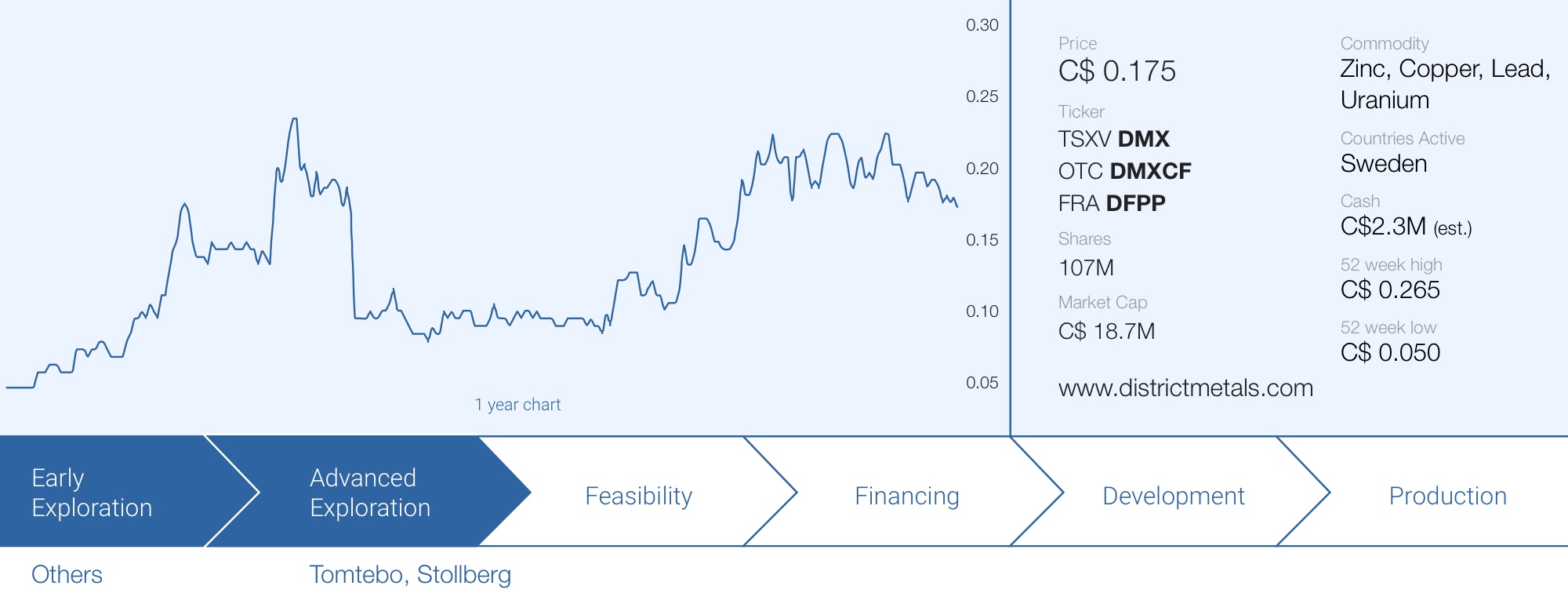
Until earlier this year, District Metals (DMX.V) was best known for Tomtebo, its flagship asset. Tomtebo is still a very legitimate zinc-dominate polymetallic exploration project, but as the financial markets don’t really care about zinc (or any base metals, really) right now, the company has been moving into a new strategic direction.
CEO Garret Ainsworth earned respect and trust from the market in the uranium sector, and the company has been picking up uranium properties throughout this year. And that’s not a strategy to take advantage of the uranium price, which has been gaining momentum throughout the year, but to combine the best of both worlds. Ainsworth’s knowledge of uranium exploration and the existing team with extensive knowledge of the Swedish mineral sector created a good combination to pursue the acquisition of uranium-bearing assets in Sweden. Those are still relatively easy to find as there still is a moratorium in place on the exploration and production of uranium (which basically means the projects are worthless) but there appears to be a political shift and lifting that moratorium is now on the table once again.
In a way, District Metals is a bet on the Swedish government lifting the moratorium on uranium-related activities. But at least the company will be more active with the new joint venture agreement with Boliden, a major Scandinavian miner and smelter.
The recent deal with Boliden on Tomtebo and Stollberg
District Metals has confirmed its Swedish subsidiary has entered into an agreement with senior producer Boliden whereby both companies will team up to advance the Tomtebo and Stollberg properties, both located within trucking distance from Boliden’s operating Garpenberg mine and mill.
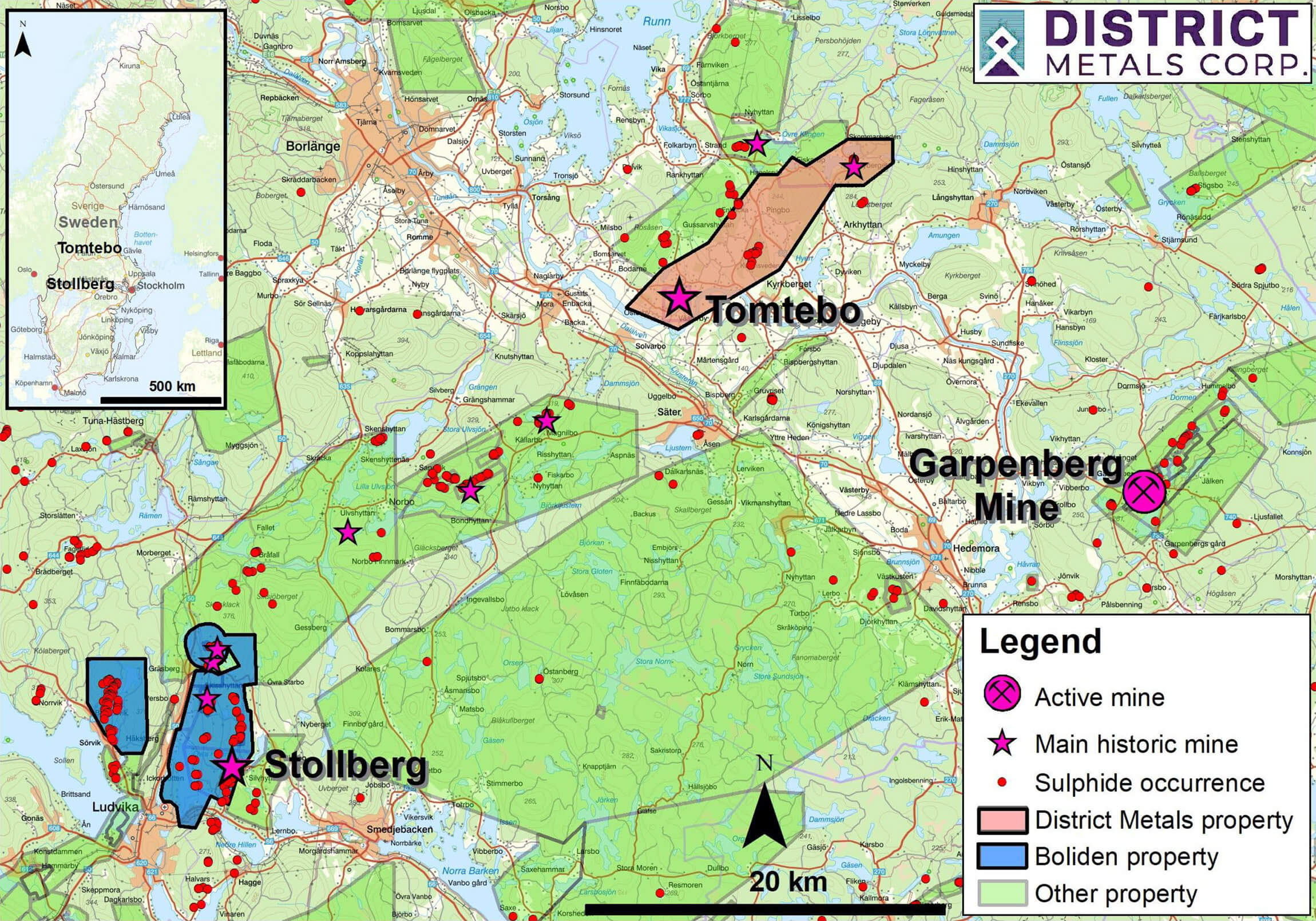
Initially, Boliden was granted the right to earn a stake of up to 85% in District Metals’ Tomtebo property, which was the flagship asset of the company. Once Boliden exercises its earn-in option, the Tomtebo asset will be rehomed in a new joint venture together with the Stollberg asset (owned by Boliden) whereby District Metals will end up with 15% of the joint venture (which means District will retain a 15% stake in Tomtebo as well as Stollberg).
The Stollberg project is just 35 kilometers away from the Tomtebo asset, and is located just 50 kilometers west from the Garpenberg mine which is currently owned and operated by Boliden. The Stollberg mineralized trend has been mined for several centuries and the most reliable data point towards a total of almost 7 million tonnes of rock that have been mined from the Stollberg project.
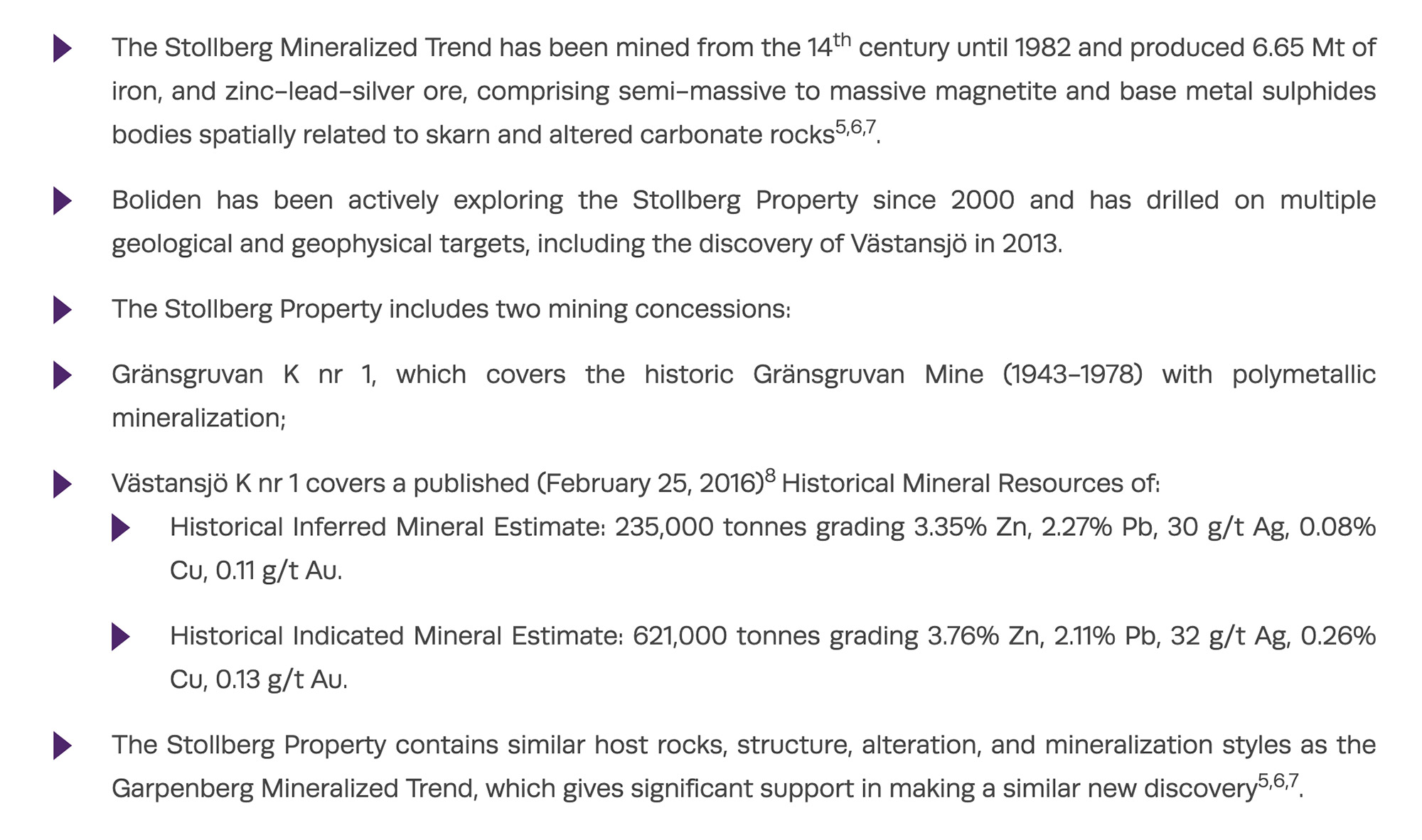
Before Boliden can exercise the option to earn its 85% stake in the Tomtebo asset, it is required to spend at least C$10M on the exploration of both the Tomtebo and Stollberg assets before the end of October 2027. To protect its own interests, District has confirmed there is a minimum of C$3M that will have to be spent on the Tomtebo project. Once the C$10M has been spent, the aforementioned joint venture company will be formed with Boliden as 85% owner and District Metals as 15% owner. District will also be the operator during the C$10M earn-in phase and that is good news as it will likely generate a few hundred thousand Canadian Dollar per year in operator fees which will help to cover the overhead expenses in Sweden.
This appears to be a good deal, especially as District Metals has been moving toward assembling a portfolio of uranium properties in Sweden as it anticipates the current moratorium on uranium exploration and mining to be lifted. This means that District can spend its cash on the uranium assets while Boliden will cover the exploration expenditures on Tomtebo (and Stollberg).








Meanwhile, the company continued to pick up uranium assets in Sweden
The company announced the Swedish mining inspectorate has approved District’s application for the Nianfors nr 1 and 2 mineral licenses. Those licenses can be explored for base metals and Rare Earth Elements. But of course, the known uranium occurrence is very likely what appealed most to District Metals.
The Nianfors nr 2 license contains the Majsaberget uranium-yttrium-molybdenum occurrence, evidenced by the presence of 889 mineralized boulders over a relatively small area of 500 by 200 meters. The weighted average grade of the mineralized boulders was 0.16% U3O8 and 0.08% Yttrium while a 41 year old report from the Swedish Geological Survey also confirmed widespread uranium-yttrium mineralization with assay results ranging from 0.01%-1.4% U3O8 and 0.08-0.69% Y while the SGU also encountered elevated molybdenum and thorium assays.
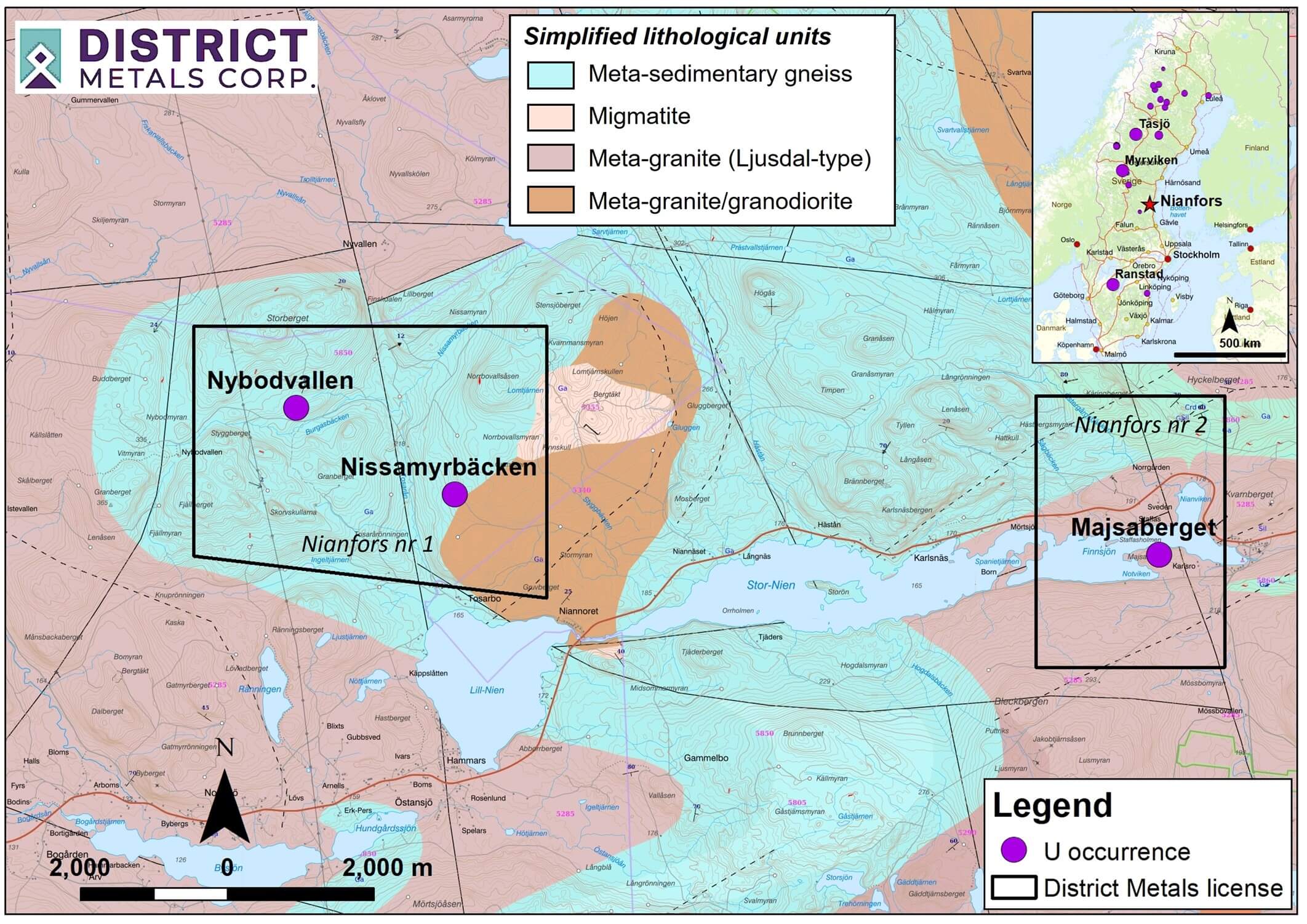
There is a historical exploration target on the asset, completed in 1985 based on the final report of the Swedish Geological Survey and that historical target contains at least 13 million pounds of uranium at an average grade of 0.07-0.14% U3O8. A good starting point to conduct its own exploration activities on the asset.
A discussion with CEO Garrett Ainsworth
Congratulations on the deal with Boliden. Although Boliden likely isn’t well known in North America, it for sure is an important player here in Europe. What attracted them to doing the deal with you? Is it because they mainly focus on production-related exploration at their producing Garpenberg mine rather than pure exploration activities?
Thank you! Boliden currently has a market capitalization of about US$7 Billion as a mining and smelting company, and they were more internationally known in the 1990’s, but became more focused on Scandinavia from the late-1990’s. More recently Boliden has been looking more internationally and they for instance have an option agreement on the Duke Property in British Columbia with Amarc Resources.
When District Metals entered the Bergslagen District in 2020 for polymetallic (Zn-Pb-Ag-Cu-Au) targets it was well known that this Boliden’s and Lundin Mining’s (LUN.TO) backyard – just like the Athabasca Basin is Cameco’s and Orano’s backyard. It’s a relatively small exploration and mining industry in Scandinavia, and after our drill programs at Tomtebo we often reviewed our drill core with Boliden. One of the heads of exploration for Boliden was positively familiar with our Tomtebo Property, and the drill results from our Steffenburgs zone drew even more attention with hole TOM21-028 being the best with 30 m at 10.9% ZnEq.
From what I can tell Boliden doesn’t have a very large technical team available to explore grassroots or brownfield properties in the Bergslagen. The exploration efforts at Boliden’s Garpenberg Mine take a lot of people as they are continually replacing resources and reserves as they are depleted. Partnering up with Boliden in the Bergslagen District is a win-win for many reasons.
And what attracted you to doing the deal with them?
When we released drill assay results from our Tomtebo Property (hole TOM22-038: 25.5 m at 8.2% ZnEq) in August 2022, and our Gruvberget Property (hole GRU22-002: 9.1 m at 6.1% ZnEq) in September 2022 the market did not react, so we reacted by changing the going forward strategy. The new strategy included bringing in a major mining company to fund exploration at Tomtebo along with looking at uranium opportunities, which we have now both executed on.
When we started discussions with Boliden with regards to optioning Tomtebo it was a great surprise that they wanted to bring their Stollberg Property into the agreement.
There are a number possible outcomes from our Tomtebo-Stollberg agreement with Boliden that we have mapped out, and here are the top three:
- We discovery a significant body of mineralization at Tomtebo, and District’s 15% of Tomtebo becomes much more valuable.
- We encounter additional indications that there is good potential for a significant body of mineralization at Tomtebo, and a 15% District Metals / 85% Boliden joint venture is formed to continue exploration.
- We do not encounter a significant body of mineralization at Tomtebo, and Boliden doesn’t form a joint venture. In this case we are guaranteed $3 million of expenditures on Tomtebo at no dilution along with an operator fee, and we get 100% of Tomtebo back.
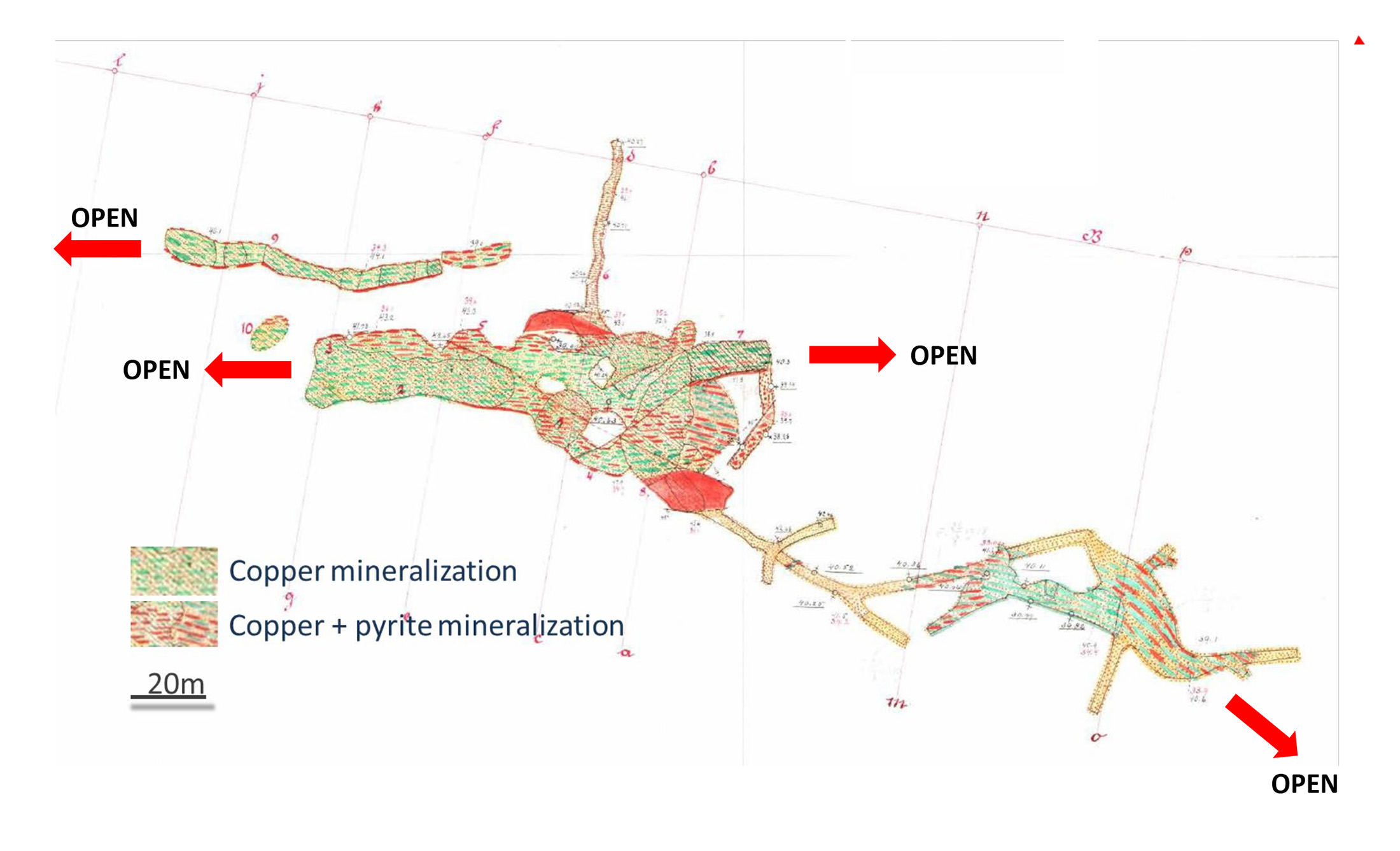
Of course, the C$10M in committed exploration expenditures is very nice, but would you mind elaborating on what you like about the Stollberg property?
I’ve known about the Stollberg Property since I entered the Bergslagen in 2020. Our Country Manager (Hein Raat) and Technical Advisor (Rodney Allen) both spent 4 years or more working on Stollberg while they were employed by Boliden, and they both feel that Stollberg has potential to be another Garpenberg. There has been significant historical production of just under 7 million tonnes, and there are significant historical drill results and mineral resources on the Stollberg Property that will not be disclosed publicly by request of Boliden. Of course, any new drill results or mineral resource estimates under the District-Boliden collaboration will be released publicly.
The best way to look at Stollberg is that it is more developed than Tomtebo, and it has a 4.5 km polymetallic mineralized trend as part of a syncline that looks just like Garpenberg.
How will the joint approach work in reality? Is there a technical committee that will take the exploration decisions and approve the budgets? If so, who will call the shots on that committee?
We have already had our first technical meeting on October 24 and 25 to kick things off in the right direction. The technical committee is a split of District and Boliden, and Boliden has the final say as they are bringing the C$10M of work expenditures. Our takeaway from the transaction discussions and technical committee meeting is that drilling will be a focus at Tomtebo and Stollberg given their advanced exploration status.
As you will be managing the exploration programs, is it safe to assume you will earn a management fee (which will help to cover overhead expenses?)
Yes, an operator fee is fairly standard with these types of agreements, and the rate is set at 7.5%. This should mean that District will be able to advance Tomtebo without spending any cash from our current treasury which is at about C$2.3M.
When can we expect to see an exploration budget and plans for 2024?
We are working on it right now! We should have our proposed exploration program and budget for 2024 submitted to the exploration committee by the end of November 2023. There will likely be some back and forth, so it might be early-January 2024 when we disseminate news about this. We are hoping to start drilling at Tomtebo in late-January 2024.
Was there a specific reason why the Gruvberget and Svärdsjö project was not included in the joint venture agreement? Did you want to retain full ownership for the time being, or was Boliden just not interested as those projects are further away from the Garpenberg processing facilities?
With Boliden we initially discussed doing a larger transaction that incorporated other polymetallic properties, but it started getting too complex, so we decided to focus on each company’s top polymetallic properties. There is potential for further collaboration down the road, but we’ll see how the Tomtebo-Stollberg Project goes first.
Anything with 10 million tonnes and reasonable polymetallic grades (approximately 8% ZnEq) within 150 km of the Garpenberg mineral processing facilities is of interest, so that could ultimately include Gruvberget and Svärdsjö if mineral resources of that size were delineated. A standalone deposit would have 20 million tonnes at 8% ZnEq. Infrastructure in the Bergslagen is incredibly good, so it’s easier to make a project work compared to, say, Alaska.
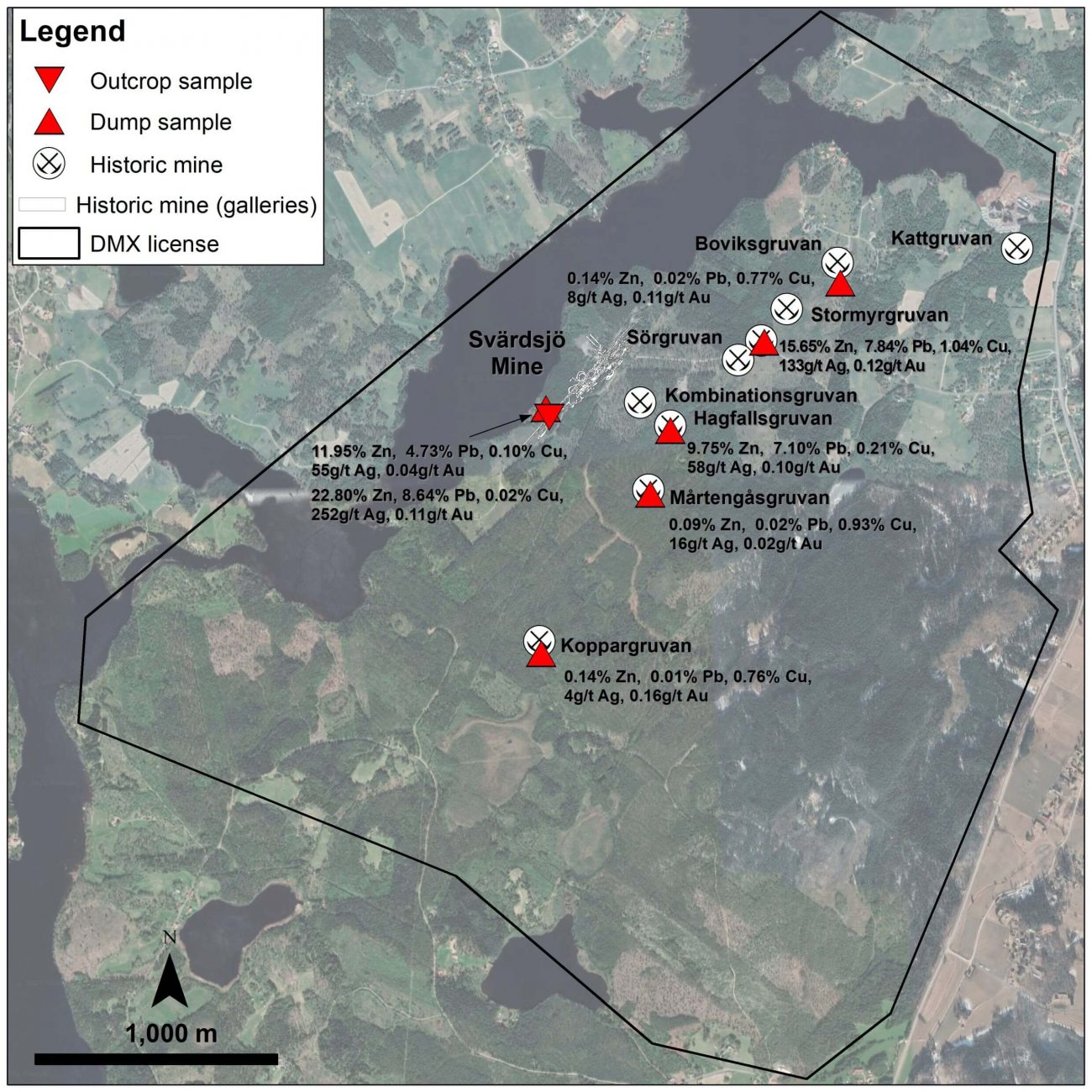
As you are ‘giving up’ 85% of the Tomtebo project as part of this joint venture, should we interpret this move as a definitive change of direction towards uranium in Sweden (of course subject to the moratorium being lifted)?
We only give up 85% of Tomtebo if Boliden elects to move forward with a joint venture, and we gain 15% of Stollberg which is more advanced than Tomtebo. We are focused on our other polymetallic properties in Sweden, and other uranium properties within Sweden and elsewhere. Right now, our uranium properties in Sweden are a call option on the current uranium moratorium being lifted. From a political standpoint it looks very positive that the uranium moratorium could be lifted within the next 6 to 12 months, but a definitive change of direction of the company towards uranium in Sweden isn’t possible until the uranium moratorium is actually lifted.
District recently filed its full-year financial statements
The company also recently filed its results for the financial year which ended in June. As of the end of June, District Metals had a positive working capital position of approximately C$2.5M but we will likely see an updated financial report sooner rather than later which will disclose the company’s cash and working capital position at the end of its first quarter (September). As mentioned in the interview with Garrett Ainsworth above, the company currently still has C$2.3M in cash thanks to its decision to raise money earlier this year.
In March, District raised C$3M by issuing 20 million units at C$0.15 per unit. Each unit consisted of one common share as well as half a warrant with each full warrant allowing the warrant holder to purchase an additional share at C$0.20 for a period of three years. Should those warrants end up in the money and be exercised, this would bring in an additional C$2M in cash to the company but of course there is no obligation for the warrant holders to exercise them anytime soon and the warrants are currently out of the money.





Conclusion
District Metals is doing what it felt it had to do. The company didn’t get any love from the market for its base metals exploration so it tried to find a way out of what seemed a vicious circle. The first step was to diversify the company’s focus towards uranium as that’s what CEO Ainsworth focused on before taking the CEO role at District Metals. And with the joint venture agreement with Boliden, it is completing (or at least working towards completion) of a second step. The exploration expenditures that will be funded by Boliden will likely be sufficient to at least have a better idea if either Stollberg or Tomtebo (or maybe both) will reach the critical mass to continue the exploration activities. In any case, District Metals has secured a credible and financially strong partner with Boliden.
Disclosure: The author has a long position in District Metals. District Metals is a sponsor of the website. Please read our disclaimer.
